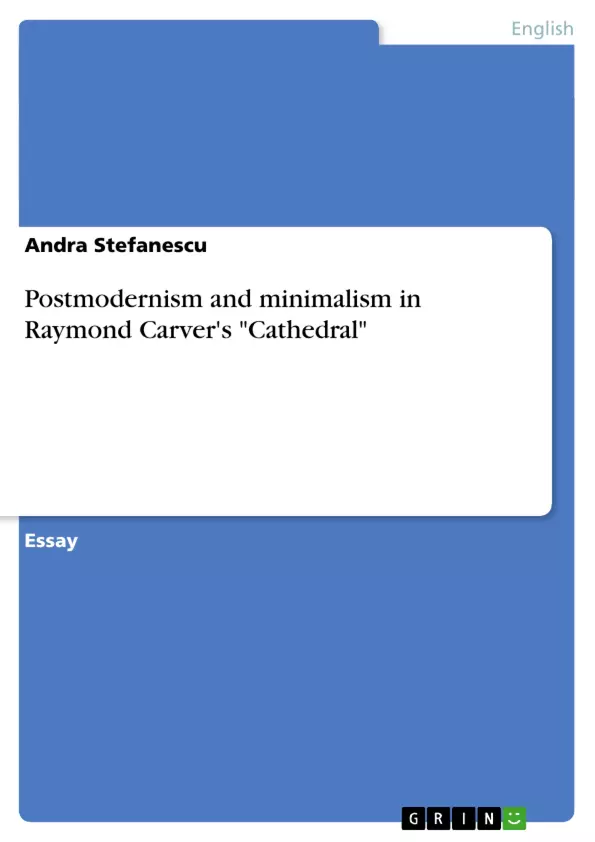This essay takes a closer look at postmodernism and minimalism in Raymond Carver’s short story "Cathedral".
Inhaltsverzeichnis (Table of Contents)
- Postmodernism and minimalism in Raymond Carver's Cathedral
- The minimalist traits of the story
- Postmodernism and the role of the narrator
- Minimalist features of the story: terseness and silence
- Indeterminacy and the inability to communicate
- The “less is more” approach and the value of conciseness
Zielsetzung und Themenschwerpunkte (Objectives and Key Themes)
This essay analyzes Raymond Carver's short story "Cathedral" and its relation to the postmodernist and minimalist currents in American literature of the 1980s. The essay explores the key features of minimalism in the story, including its brevity, focus on a single incident, limited number of characters, and use of a limited setting. It then examines how the story exemplifies postmodernist themes like the blurred boundaries between fiction and reality, the unreliable narrator, and the emphasis on personal interpretation.
- Minimalism in American literature of the 1980s
- The role of the narrator in postmodernist fiction
- The concept of indeterminacy and its implications
- The use of silence and omission in minimalist storytelling
- The "less is more" approach to writing and its benefits
Zusammenfassung der Kapitel (Chapter Summaries)
The first part of the essay explores the minimalist features of "Cathedral" and examines its narrative structure. It highlights the story's brevity, its focus on a single incident, and its limited number of characters. The second part of the essay explores the postmodernist elements of the story. It discusses the role of the narrator, the blurred boundaries between fiction and reality, and the emphasis on personal interpretation.
Schlüsselwörter (Keywords)
This essay primarily focuses on the concepts of postmodernism and minimalism in American literature, particularly in Raymond Carver's short story "Cathedral." It explores key features of minimalism, including brevity, concision, focus on single incidents, limited settings, and a limited number of characters. The essay also examines postmodernist themes like the unreliable narrator, the blurred boundaries between fiction and reality, and the importance of personal interpretation. Key terms include minimalism, postmodernism, unreliable narrator, indeterminacy, silence, omission, and "less is more."
- Quote paper
- Andra Stefanescu (Author), 2006, Postmodernism and minimalism in Raymond Carver's "Cathedral", Munich, GRIN Verlag, https://www.grin.com/document/91270



